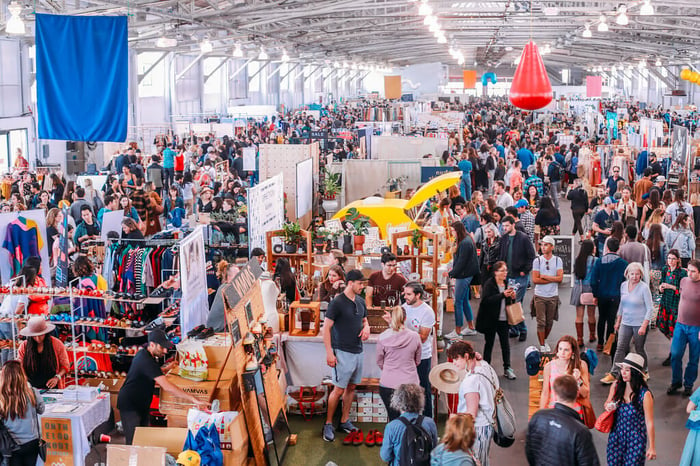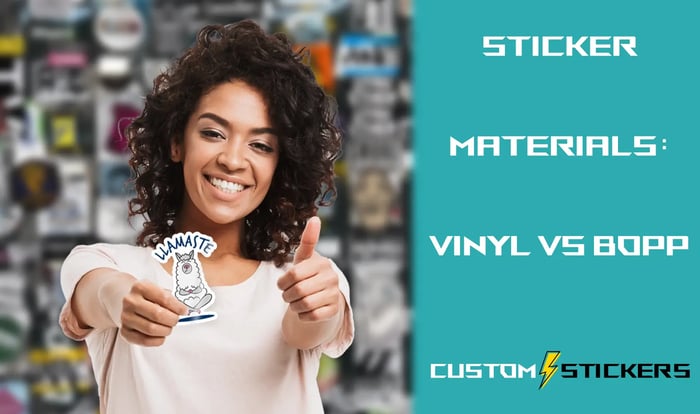When I saw Sarah James present at Design Your Career last October, I couldn't pass up the chance to ask her to share her experience with craft fairs. Sarah is the Director of The Contemporary Craft Festival and Crafty Magazine's new business columnist.
She has a degree in ceramics and was a maker before she started organizing big craft fairs over ten years ago, so she has seen the business from both sides.
Here she answers some of your questions about craft fairs and shares her advice for making the most of your investment in the event.
I am progressing from craft fairs with tables to a bigger show with a booth-style stand. What will the main differences be that I need to consider?
The first difference you will find is the cost of the stand. Bigger shows use a "shell scheme" (wall panels) with additional lighting and accessories. Some shows include a standard package to which you can add electric sockets, fans, and extra lighting.
You can even rent tables, chairs, and cabinets, which though convenient, can add considerably to the cost of the event.
Prices will vary dramatically! And don't forget to factor in your accommodation costs and public liability insurance. All reputable shows will expect you to be fully covered.
Do your research.
First, visit shows that you've heard are good and decide if you think your work would fit in. Usually, bigger shows have a selection process, some are more stringent than others, and the application deadlines are often six months before the event.
For example, if you consider applying for The Contemporary Craft Festival or Made by Hand, you will need to produce six excellent images of your work for the selection panel.
Make sure you sign up for newsletters from the show you like, and they will usually remind you when the deadlines are looming.
Good images are the key to your success. Without good pictures, you will not get accepted into good shows, and it is worth getting professional images taken.
I cannot stress how important good pictures are to the success of your business. They are VITAL! They can be used for applications, sending to the press, and selling your work online.
You also have to consider whether you can make enough stock to fill your stand, cover your stand costs, and make a healthy profit.
There is little point in booking a $600 stand if you only have $500 worth of stock to sell. You have to put your business head on and think, "how much can I make, and what is my profit after all costs?"
In many cases, it will depend on what you are making. If you are an artist and selling your prints and stickers, it is rather easy to produce a large quantity of stock.

Is a bigger stand usually better, or should I save money on space and advertise in the show guide instead?
It very much depends on the price of the stand. Large trade fairs are expensive, so small stands are often the only option.
However, if I use The Contemporary Craft Festival and Made by Hand as examples, as they are less expensive, I think it can be better to book a larger stand.
It gives you an opportunity to stand out in a crowd of small stands. Having a larger stand also has the advantage of fitting more stock and customers into it!
With a small product like custom stickers, having a smaller stand may make more sense. You don't want a bunch of space. However, you can also fill the space with larger prints of your artwork, showing the details from a distance.
Check out another recent customer interview we did.
I would like to have a model walking around the show wearing my accessories and handing out leaflets – do most exhibits allow this kind of promotion off the stand?
This may be permitted in larger, commercial trade fairs, but it's not done at the fairs I organize or other fairs of similar nature.
You'd best look at the T&Cs or ask the organizer.
Do you think I will lose sales if I don't accept credit cards?
Yes. So many great options now allow small businesses to take cards at low costs. Square and Stripe are a few options where your smartphone is turned into a mobile card machine.
Make sure your venue either has good WIFI or cell reception, or they won't work.
For example, we don't have 5G in Bovey Tracey. But help is at hand; we offer a central credit card system at The Contemporary Craft Festival and Made by Hand. There is a small charge, but it means you can take all major credit cards and get paid directly into your bank account soon after the event.
How do I grab people's attention when selling a tiny product like stickers?
I recommend taking some of your favorite artwork pieces and printing large copies. For example, you can have a banner with some of your favorite designs.
This can catch the eye of potential customers from a distance with ease.
The nice thing about stickers is that they are an easy purchase for many visitors, as the price is low. That said, you'll need to get traffic to your booth to make sure you get enough quantity of sales to cover your costs.
What about jewelry? I make jewelry that is hard to see from a distance – how can I grab people's attention with my stand display?
First, you must wear your jewelry; it's the best way to show it off.
I also prefer that the jewelry is not behind glass. While this poses some security issues, the glass is a barrier to sales and allows the customers to browse more freely. In addition, you can have conversations with the customer and hand the jewelry more easily.
Allowing the customer to hold and touch the products is a compelling driver to seal a purchase.
Make sure you have a mirror on your stand, handheld, and wall mounted if possible.
You don't want a customer to disappear to a neighbor's stand and take a fancy to something else.
Encourage your customers to try on your jewelry and have suitable cleaning products to clean earrings. If you feel an open stand is too nerve-wracking, make sure you have some excellent, large images of your work on the back wall of your stand, to draw attention to your work.
Should I stand behind a table or in front? I don't want to scare people away from my stand!
Either can work perfectly well, depending on what you sell. It can be helpful on a small stand, especially if you sell stickers, to have a table or counter at the front.
With jewelry, you want to be attentive to both customer needs and keep an eye on your precious stock.
You will need an open stand if you sell furniture or larger pieces of textiles. This allows for more customers to enter your stand to capture your audience and appreciate the work.
Giving the work space to breathe can be very powerful. It can be very effective if your stand is not packed to the rafters. Let the work do the talking.
As for scaring customers away, you have to relax and be friendly without being pushy. Greet each customer with a friendly hello. You can ask a few easy questions like, "Have you visited the show before, Have you traveled far etc."
You'll soon gauge if they want to talk. If they seem interested, continue the conversation with "This is my new range of work…."…….. "These pieces were influenced by the Cornish coast…." Give some background, customers love to hear about the stories behind your work.
Conversely, some people do not want to talk at all. So politely withdraw and offer them help if they need it.
Again, I think it's vital that you visit shows and get some ideas and start developing your own style that compliments your work.

Above all, be unique and let your stand reflect your work and brand. Exciting times!
Making your own stickers? Make sure you read our detailed article on how to make stickers with Cricut.






